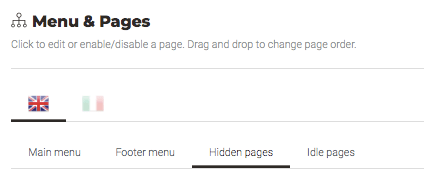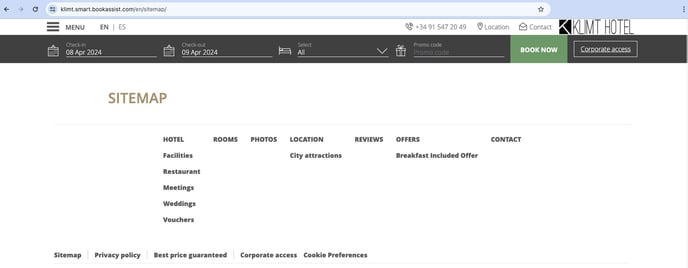Sitemap.xml vs Sitemap.html
HTML mapa webu je navržena tak, aby usnadnila orientaci na webu pro uživatele, zatímco XML mapa webu je určena výhradně pro vyhledávače.
- Sitemap.xml
-
Optimalizujte URL adresy stránek
-
Zkontrolujte nepoužívané stránky
-
Odešlete svůj sitemap do Google Search Console
-
- Sitemap.html
Sitemap.xml
Pro přístup k souboru sitemap.xml na vašich webových stránkách stačí přidat "/sitemap.xml" za název vaší domény.
EG. https://www.yourdomin.com/sitemap.xml
 |
https://klimt.smart.bookassist.com/sitemap.xml
Všechny URL adresy obsažené v souboru sitemap.xml mohou být snadno nalezeny a indexovány vyhledávacími roboty, což znamená, že se mohou objevit na stránkách výsledků vyhledávání (SERP), jako je například vyhledávání na Googlu.
Optimalizujte URL adresy stránek
Věnujte pozornost URL adresám stránek, které nejsou optimalizovány pro vyhledávací dotazy.
Zkontrolujte nepoužívané stránky
a také testovací stránky, které byly zařazeny mezi neaktivní stránky místo skrytých stránek, které nejsou indexovány.

Odešlete svůj sitemap do nástroje Google Search Console
Google umožňuje odeslat váš sitemap přímo ve svém bezplatném nástroji nazvaném Google Search Console (GSC), dříve známém jako Google Webmaster Tools.
Zde jsou tři jednoduché kroky, jak odeslat sitemap do Googlu:
- Přihlaste se do svého účtu Google Search Console.
- Poté přejděte do sekce „Sitemapy“ v hlavním menu.
- Zde můžete přidat novou URL adresu vašeho souboru sitemap.
Sitemap.xml
Stránka sitemap.html zlepšuje navigaci na vašich webových stránkách tím, že shromažďuje všechny odkazy na jednotlivé stránky na jednom místě. Tímto způsobem mohou uživatelé snadno a rychle najít potřebné informace. Odkaz na sitemap.html naleznete v patičce všech webů Smart.
 |
https://klimt.smart.bookassist.com/en/sitemap/